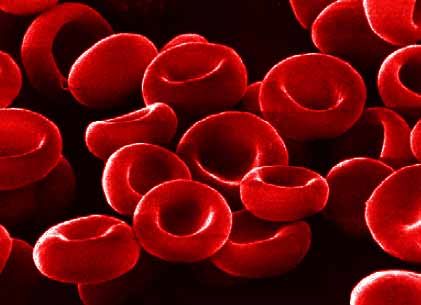-
 New Technology Telescope
New Technology Telescope
-
 Defensin
Defensin
-
 Isomerism
Isomerism
-
 Scaly
Scaly
-
 Cape Canaveral
Cape Canaveral
-
 Spreading (agricultural practice)
Spreading (agricultural practice)
-
 Critical temperature
Critical temperature
-
 Chard
Chard
-
 Keratin
Keratin
-
 Creatine Phosphokinase
Creatine Phosphokinase
-
 Weighted digital code
Weighted digital code
-
 Manubrium
Manubrium
-
 Monzonite
Monzonite
-
 Rostrum
Rostrum
-
 SEPP
SEPP
-
 Transcription
Transcription
-
 Aerocapture
Aerocapture
-
 Crystal lattice
Crystal lattice
-
 Lepidoptera
Lepidoptera
-
 RSS
RSS
-
 i-Link/S400
i-Link/S400
-
 Hermetic sealing
Hermetic sealing
-
 Moquette Tanne
Moquette Tanne
-
 Superplastic metal
Superplastic metal
-
 Haemorrhoids
Haemorrhoids
-
 Air brake
Air brake
-
 Fructose
Fructose
-
 Precordial pain
Precordial pain
-
 Clinical trial
Clinical trial
-
 Maintenance
Maintenance
Red blood cell
A red blood cell is a blood cell that transports oxygen. The red blood cell is also called the erythrocyte (erythros = red).
Structure of a red blood cell
A red blood cell is a biconcave disc-shaped cell with no nucleus, mitochondriae or ribosomes, and contains a large amount of haemoglobin, giving it its colour. Red blood cells bind oxygen in tissues because of the iron contained in their haemoglobin, their red pigment. There are 5 million erythrocytes per microlitre (one thousandth of a millilitre) of blood.
Like all blood cells they are produced in the bone marrow by maturation of haemopoietic stem cells. We refer to erythropoiesis, a permanent mechanism, which takes place to renew the store of red blood cells at a rate of 1% per day.
Function of the red blood cell
Erythrocytes carry oxygen molecules (O2) from the lungs to all of the cells in the body and some of the carbon dioxide (CO2) from the cells to the lungs. Glucose is the only source of energy for erythrocytes.
Red blood cells are responsible for the blood groups (ABO and rhesus systems) as they carry antigens on their cell surfaces.
 Red cells make up almost half the volume of blood. © DR
Red cells make up almost half the volume of blood. © DR
Latest
Fill out my online form.



